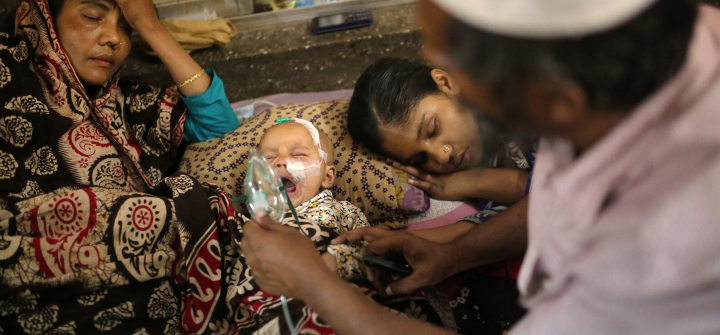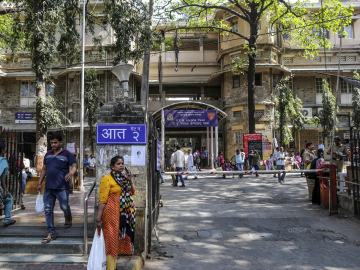How to Reduce Child Deaths After Hospital Discharge
Even as child mortality declines globally, a trip to the hospital doesn’t always safeguard a child in low- and middle-income countries. In fact, a new Lancet Global Health study has uncovered a significant mortality risk for children after their discharge from 9 hospitals across 6 countries in Africa and South Asia.
The Childhood Acute Illness & Nutrition (CHAIN) Network followed 3,101 children age 2 – 23 months from admission for an acute illness until 180 days after discharge. Researchers found that 48% the 350 deaths recorded occurred within 6 months after the child was discharged from the hospital. (Most of the post-discharge deaths occurred at home rather than during a further admission to hospital.)
A fundamental shift to a child-centered, risk-based approach to inpatient and post-discharge management is needed, say James A. Berkley, FRCPCH, FMedSci, a professor with the KEMRI/Wellcome Trust Research Programme in Kenya and the University of Oxford, and Judd L Walson, MD, MPH, vice chair of the Department of Global Health at the University of Washington.
In the following Q&A, Berkley and Walson explain the study’s significance—and surprises.
What’s the most important takeaway from this study?
Despite a major global decline in child mortality, when children become unwell and are admitted to hospital in low- and middle-income countries, their risk of death remains excessively high, by far. The CHAIN Network followed up children after discharge from hospital and showed that nearly half the deaths occurred after discharge from hospital. As expected, as well as then severity of the illness, their nutritional status and underlying medical conditions are important risk factors.
However, for the first time in such settings, CHAIN shows the extent to which the mother, or other caregiver, and household situation are risk factors for death. However, importantly, in CHAIN we could also identify many children at low risk of death.
Were you surprised by the study’s consistent results across different countries and regions?
We had seen in previous studies, which were mostly in specific groups of children, that the maximum proportion of deaths occurring after discharge was about 50%, but we were surprised to see this was true across the whole group of children admitted to hospitals in a wide variety of settings in Africa and South Asia.
Especially surprising was that this proportion occurred in well-nourished children as well as malnourished children.
We also saw that the majority of post-discharge deaths occurred at home – the children were not brought back to hospital when they became unwell again. We were also gratified to see that post-discharge mortality was just as predictable as mortality during the hospital admission.
The paper calls for a “fundamental shift” in post-discharge management of children. What would that look like?
At the moment, the WHO care guidelines are based on “syndromes,” which are sets of symptoms and signs that broadly associated with illnesses like diarrhea, pneumonia etc. Countries create national guidelines based on the WHO guidelines. CHAIN identified that within these syndromes, the risks of death range from zero to more than 20%. Also, many children meet criteria for more than 1 syndrome, and others have underlying conditions or challenging home circumstances
Despite this, children within each syndrome category are recommended to receive more or less the same treatment. CHAIN identified that treatment needs to be tailored to risk. Some children could be discharged earlier, saving costs to hospitals and families, and other children need a higher level of treatment.
Would this be the responsibility of hospitals or local health agencies—and is the gap between them part of the problem?
This is the responsibility of national health agencies, hospitals, and individual practitioners. At admission, underlying conditions, overlapping syndromes, nutritional status and social disadvantage should be sought, documented, and acted upon. This is better done using formal checklist than clinicians’ judgement.
The fact that some children are at risk of death after discharge needs to be recognized. This means that risk should be assessed at the time of discharge: What underlying conditions does this child have? What kind of household care environment is the child returning to? Does the mother, caregiver, or family know what to do if the child becomes unwell again? Do they know that the child may still be at risk and needs a period of convalescence?
These things are needed in local guidelines and policy statements, and to be considered when assessing performance.
Join the 50,000+ subscribers in over 170 countries who rely on Global Health NOW summaries and exclusive articles for the latest public health news. Sign up for our free weekday newsletter, and please share the link with friends and colleagues.
A baby who is suffering from respiratory disease receives treatment inside at Dhaka Shishu Hospital in Dhaka, Bangladesh, February 24, 2021. Syed Mahamudur Rahman/NurPhoto via Getty Images.





